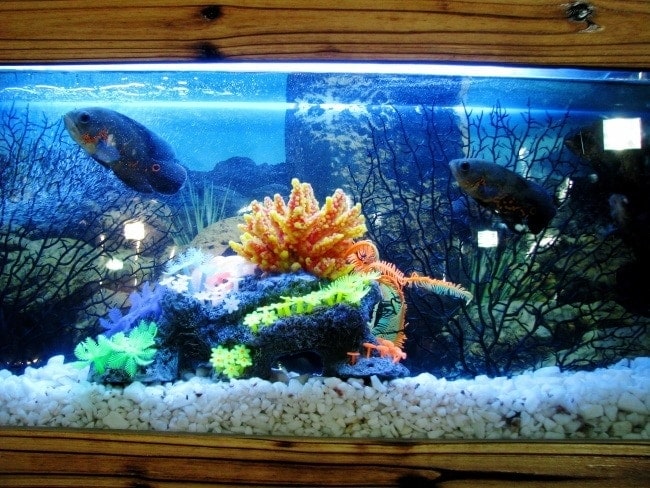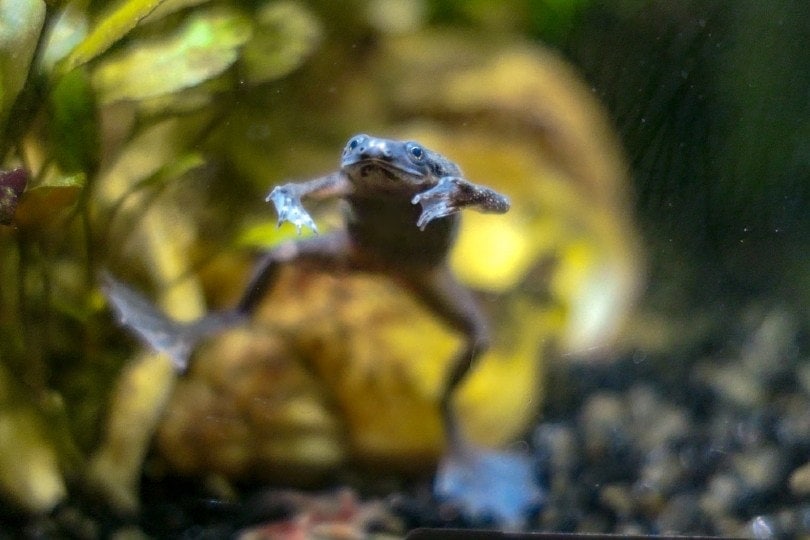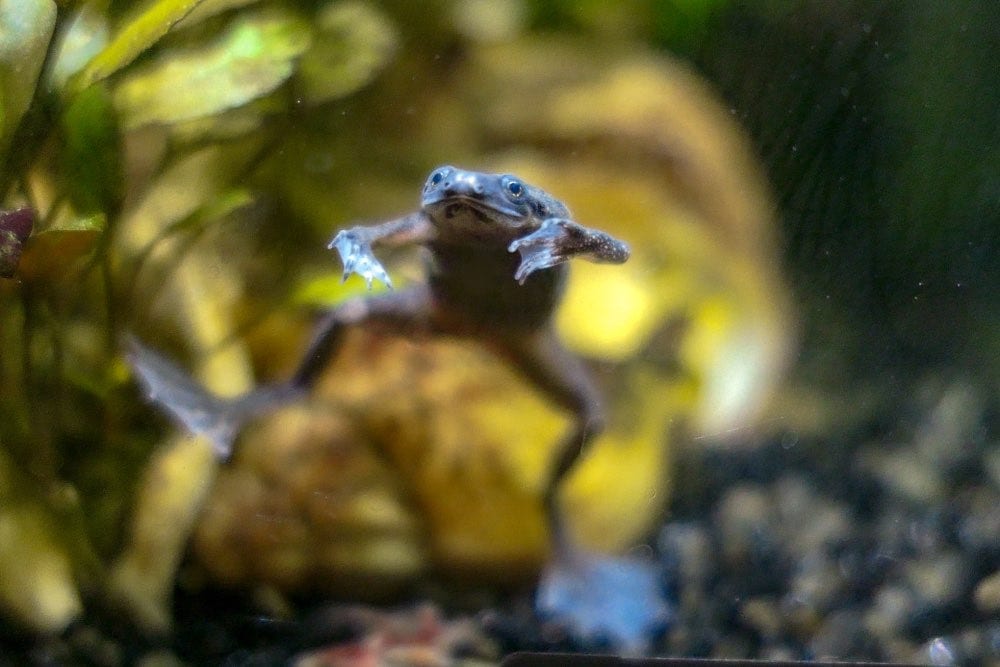Can Axolotls See? Fascinating Vet-Approved Facts

Updated on
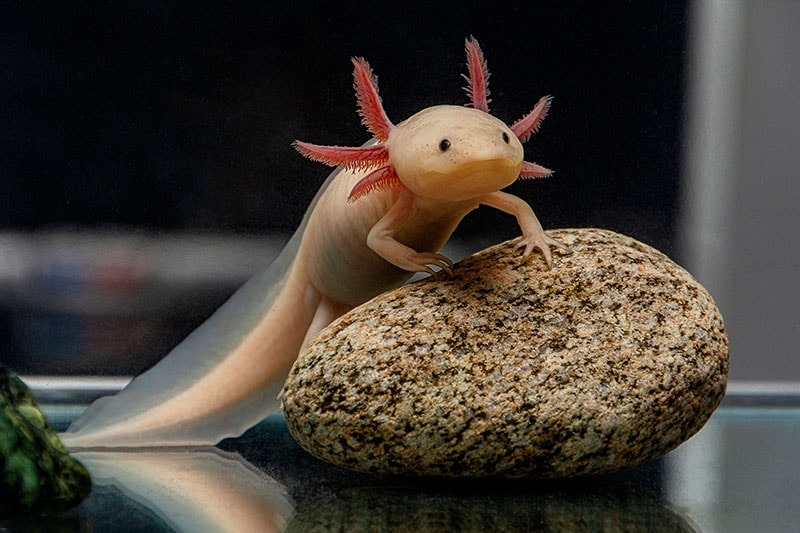
Axolotls are a source of fascination to many with their beaming smiles and many colors.
Scientifically, axolotls are paedomorphic salamanders. Paedomorphism is an alternative metamorphic process where some amphibians, especially salamanders and newts, reach sexual maturity without losing their larval traits, such as the shedding of external gills and caudal fins.
A closer look at their face also reveals tiny eyes which are not as advanced as those of mammals. But most subspecies of axolotls can see and detect light and are not fully blind. Read on below to find out more.
Why Do People Think Axolotls Cannot See?
Some aquarium owners with axolotls report that the animal does not react to their presence compared to fish. For example, if you sneak closer to the aquarium, fish will react to your presence by moving away, while axolotls will not. These basic observations made pet owners suspect that they cannot see.
Out of the more than 10 variations of axolotls, some of them, like the albino, have lost eye pigmentation, which makes it difficult to spot the eyes. In other variations, like the black melanoid (opposite of albino), the eyes are well camouflaged against the dark coat. It is difficult to spot the well-hidden eyes, cementing the myth that they are blind.
Though they perform basic functions such as reacting to bright light, the bottom line is that all axolotls have eyes. Unfortunately, their eyes are not as advanced as ours, which means they cannot perceive color and depth. Surprisingly, the limited vision is enough to cater to their needs in the wild.
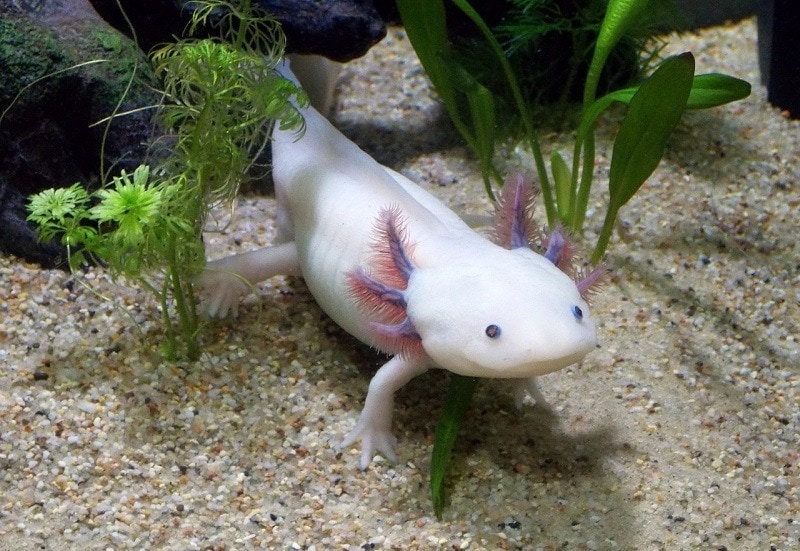
How Do Axolotls Survive in the Wild With Limited Vision?
Nature is funny, and what may look like a disability has allowed many animals to evolve uniquely. Lack of advanced eyesight has made axolotls rely on other organs for survival.
Lateral line
A lateral line is a system of sensory organs in marine organisms that allows them to detect movement and changes in water pressure. Axolotls have an advanced lateral line consisting of mechanoreceptive neuromasts. In simple terms, mechanoreceptive cells detect physical changes in the environment.
With a well-tuned lateral line, an axolotl can detect incoming prey and set an ambush or the presence of a predator and hide away.
When it is feeding time, rather than throwing food into the aquarium, grab the food, a worm for example, using a pair of tweezers. As the worm tries to wriggle free, it will create tiny vibrations. Using the lateral line, the axolotl will come out to investigate only to find a tasty meal.
Olfactory senses
Axolotls have a keen sense of smell to track down food in murky water.
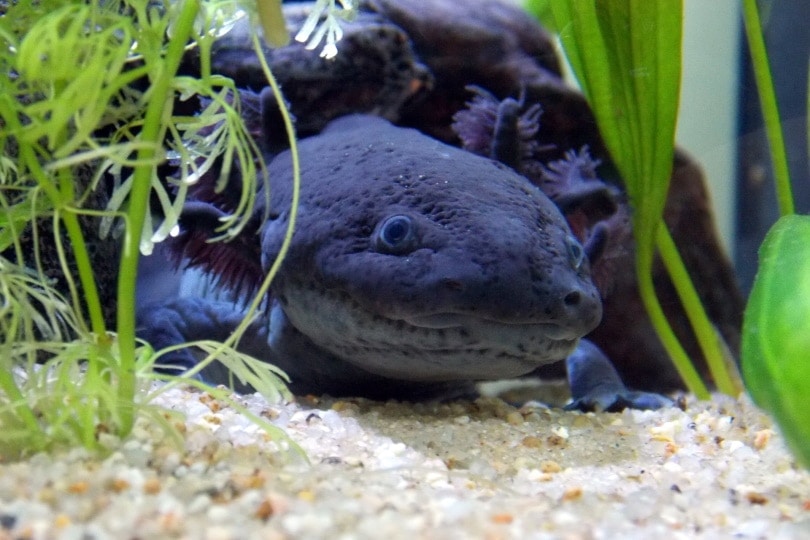
Why Didn’t Axolotls Eyes Develop?
The lack of well-developed eyes is an evolutionary process dating back several millions of years. The process channeled energy used in the development of eyes to other organs. Here is why axolotls did not develop sharp eyesight.
Their environment
Axolotls are native to Lake Xochimilco in the Valley of Mexico and Mexico City canals. Using eyes in murky waters has proven to be ineffective at locating prey and navigating through the waterways. Thus an axolotl uses a lateral line to scan through its surroundings.
Feeding behaviors
Axolotls are nocturnal animals and actively feed during the night. As a night feeder, there are two ways to find food—you must have sharp eyes like those of cats or sacrifice eyesight for other sensory organs. The axolotl chose the latter. It now has limited eyesight but a powerful olfactory system to help it find food without light.
Evolution
Charles Darwin explained in his infamous book, On the Origin of Species, that animals that adapt better to changing environments have increased chances of surviving in the future. Perhaps axolotls evolving without sharp eyes is one way to adapt to the changing environment brought about by competitors and predators.
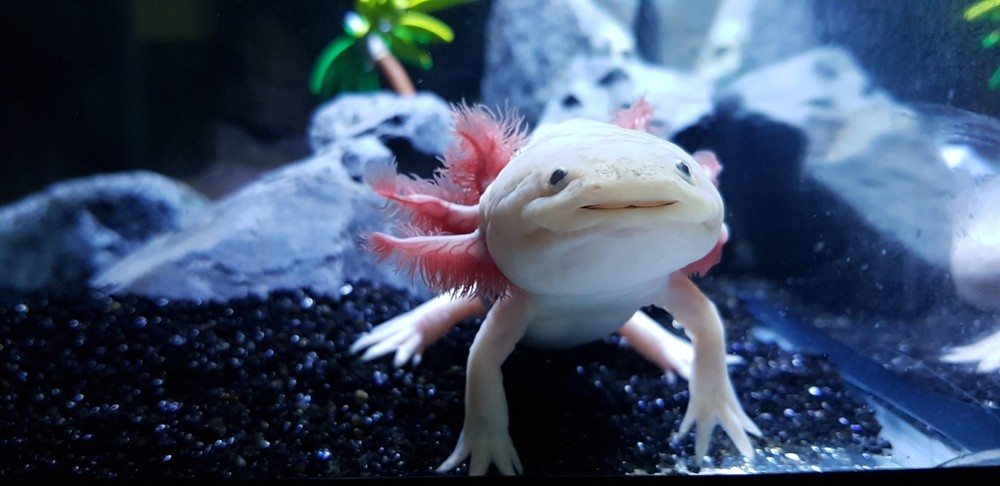
Are Axolotls Sensitive to Light?
Axolotls are nocturnal animals, which means they are not fond of light.
When keeping axolotls at home, you should mind how much light the animal is getting. Too much light will stress them and cause illnesses. In contrast, since it is a pet, you also don’t want them to live in complete darkness. So, the best way to balance things is to provide them with dim light and multiple hiding spots, such as ceramic aquarium tunnels and caves. You may also use aquarium plants to provide hiding spots but ensure there is ample space for the axolotl.
Do Axolotls Have Eyelids?
Axolotls do not have eyelids.
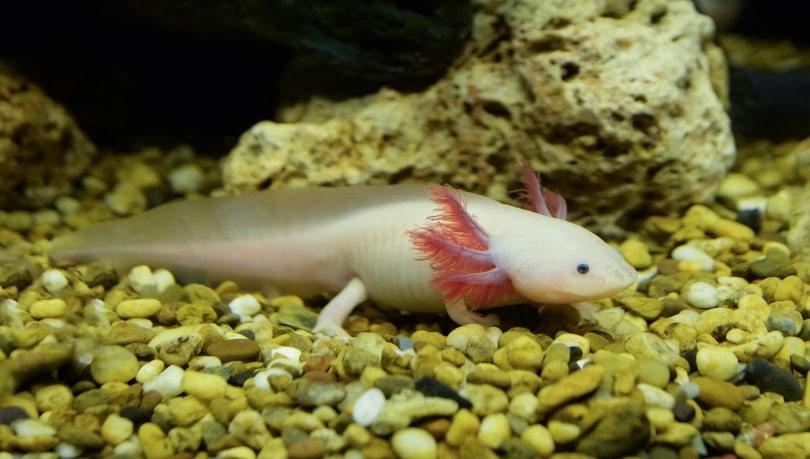
Conclusion
Axolotls have eyes and can see. The only difference between their eyes and those of fish is that they are less developed. However, don’t be deceived by their limited vision. They have a powerful olfactory system to smell prey and predators and a sensitive lateral line to determine what is swimming around them.
See also:
Featured Image Credit: Iva Dimova, Shutterstock


